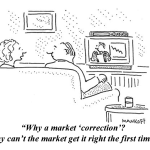Investment Strategies
Philosophy:
Intrinsic Value is the eventual worth of all future cash flow discounted to the present.

Intrinsic Value Equity
Objective: Generate compound returns with differentiated value-based strategy
Hi-Line Capital Management’s Intrinsic Value Equity Strategy is rooted in a disciplined investment philosophy focused on acquiring fractional ownership in businesses through public markets. Our approach centers on purchasing shares at prices significantly below their estimated intrinsic value, ensuring a strong margin of safety.
Our top priority is identifying great businesses with a sustainable competitive advantage or companies led by exceptional management teams with superior capital allocation skills. Risk mitigation is achieved through independent research, selecting strong, competitively positioned companies, and applying rigorous stress testing on factors such as volume, leverage, and liquidity.
Our competitive edge lies in a long-term investment horizon, creating a “time horizon” arbitrage opportunity that allows us to capitalize on market inefficiencies. Originally developed in 2005, this strategy continues to deliver value through disciplined, research-driven investing.

Income Advantaged Strategies
Objective: Advantaged yields with low duration
Hi-Line Capital Management’s Income-Advantaged Strategy is designed to provide liquidity, stability, and competitive returns. It features a short-term maturity profile with high liquidity characteristics, ensuring flexibility in changing market conditions. Investments maintain high-quality ratings, backed by rigorous internal credit analysis to mitigate risk. With a duration target of less than 2.0, the strategy aims to deliver a return objective of Treasury +1.5%.
Our investment approach includes an in-depth evaluation of the Five C’s—character, capacity, capital, condition, and collateral—to ensure sound credit selection. The strategy is benchmarked against the Barclays Agg Gov’t/Credit 1-5 Year Index, providing a disciplined framework for performance measurement. Originally developed in 2008, this strategy has a strong track record of delivering.
Principles for Decision-Making:
A. How To Think About Markets
Confidence in Long Term Expectations.
It is expected that continued economic progress and prosperity will be achieved with capitalism continuing to benefit private investment. But expect occasional irrational behavior from market participants. Best described by John Maynard Keynes in Chapter 12 of the Theory of Employment, Interest and Money.
Expect Pricing Volatility.
The emotion of greed and fear of the crowd can overreact to short-term developments. Embrace the Mr. Market concept as described in Chapter 8 of the Intelligent Investor, written by Ben Graham.
B. Risk Management
Invest with a Margin of Safety
Always seek to pay a price materially less than the estimated value. Best described in Chapter 20 of the Intelligent Investor.
Continuously Assess Risk
Risks include many factors including: risk of loss, liquidity risk, inflation risk, credit risk, volatility risk and business risk. In addition, human involvement adds: envy, temperament, competency, and execution risk. Risk cannot usually be numerically quantified but must be continuously assessed.
Be Businesslike in Managing the Investment Operation
What makes sense in business, makes sense in investing. Stay within areas of competence, if one cannot understand an investment, avoid speculative action. Keep turnover and expenses to a minimum. For long-term assets, maintain long-term focus. For short-term assets, maintain liquidity focus.
Be Conservative
In all aspects of the investment operation, including appraisal, assumptions, forecasting, assessment of risk, among all other elements.
Control the Controllable
The majority of time will be dedicated to discipline, consistency, temperament, security selection, prudent diversification, reacting rationally to developments and of course not overpaying. Uncontrollable factors such as the economy, interest rates, politics, natural disasters, war, currency, etc. will consume very little time of the investment operation.




